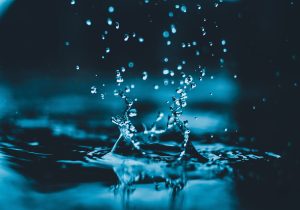The Human Body needs energy. Air provides the oxygen your cells need to get energy from food. This process, Cellular Respiration, is when the cell uses oxygen to break down sugar and much of the energy produced is stored chemically for use later. The only source of energy in the human  body is chemical energy consumed in food and it comes in the form of Adenosine Triphosphate or ATP and than converted into mechanical energy. We use this energy for our biological activities which is every thing we do for example our thought process, the breakdown of food, our movement and reproduction etc.
body is chemical energy consumed in food and it comes in the form of Adenosine Triphosphate or ATP and than converted into mechanical energy. We use this energy for our biological activities which is every thing we do for example our thought process, the breakdown of food, our movement and reproduction etc.
Our body needs fuel to be broken down into chemical energy for us to function and Carbohydrates are the main source of fuel as it is the most efficient source of food to produce ATP. Other sources include fats and proteins. Vitamins and minerals do not provide energy however they help to release energy from carbohydrates, fat and proteins, they perform many roles in the body besides assisting in the production of energy, they heal wounds, bolster the immune system and strengthen bones.
The BODIES ENERGY SOURCES
1.Carbohydrates come in two forms, firstly, as Simple Carbohydrates as with sugars found in fruits, honey and milk products and refined sugars added during processing of foods and secondly, as Complex Carbohydrates such as whole grains, bread, pasta and vegetables including potatoes and beans. Both simple and complex carbohydrates are turned into glucose or blood sugar and used for energy.
2.Fats are a major source of energy. Fats can be used in the cooking process ( eg olive oil ) and to add flavor to salads etc and are also found in foods such as animal fats like meat, dairy, poultry, fish and in non animal foods including avocados, olives, other plants and nuts.
3.Proteins build and repair the body, provides nutrients to the cells and helps regulate body processes. Excess protein provides calories for energy. Proteins from food are called essential amino acids and protein produced by the body are nonessential amino acids.
The Miracle of Water. Water is required for the whole body to function and so is a necessary assistant for providing energy for the body. Water is the medium for most chemical reactions involved in energy production. Water allows you to digest your food, lubricates joints, muscles a nd all parts in between from head to toe. At a cellular level every body part is saturated with water, water transports nutrients around the body, removes toxins, maintains body temperature and if you start to overheat (from exercise, the weather, lack of water, excessive use of alcohol) all parts of your body will have to work harder, the heart won`t function efficiently, muscles may cramp, blood vessels constrict causing less blood flow than headaches and fatigue may follow. Exercising or not the body needs water so make sure you hydrate regularly and as you increase physical activities the increase in your fluid intake is also necessary.
nd all parts in between from head to toe. At a cellular level every body part is saturated with water, water transports nutrients around the body, removes toxins, maintains body temperature and if you start to overheat (from exercise, the weather, lack of water, excessive use of alcohol) all parts of your body will have to work harder, the heart won`t function efficiently, muscles may cramp, blood vessels constrict causing less blood flow than headaches and fatigue may follow. Exercising or not the body needs water so make sure you hydrate regularly and as you increase physical activities the increase in your fluid intake is also necessary.
The BODIES ENERGY SYSTEMS
The 3 basic energy systems of the body refer to the specific mechanisms in which energy is produced and when they are required by the body.
Anaerobic (no oxygen) or Phosphagen ATP-PC System. This system is for the short sharp bursts of energy such as running up stairs, for the bus or train, throwing, hitting, jumping, the 100 meter sprint or heavy weight lifting of 2 or 3 reps so basically all short intense movements of about 10 seconds or less. The system is rapidly replenished during recovery so after about 30 seconds 70% of the phosphagens are replenished and there is 100% recovery of energy levels in 3 to 5 minutes. This instant energy comes from the breakdown of Adenosine triphosphate ATP stored within the muscles. If high intense activity continues stores may only partially replenish. To develop and improve the ATP-PC system sessions involving repeat sets of up to 10 – 15 seconds of maximum intense workouts are required.
Anaerobic a-lactic or Glycolytic System. This system is used for a couple of minutes of intense activity from 45 seconds to 120 seconds. The lactic acid system uses stored glucose from carbohydrates to create energy and if you are short on oxygen (your body is not conditioned enough) lactic acid is produced and in small amounts may help the body to absorb energy but too much lactic acid leads to that burning sensation in the muscles and ultimately fatigue. Lactic acid is a chemical byproduct of anaerobic respiration the process by which cells produce energy without oxygen. Examples of exercise to focus on this system are repeat sets of 10 reps from 45 to 120 seconds with 2 to 3 minutes of rest, similarly a gym circuit with 45 seconds on each station with 15 seconds rest between stations or 10 reps of 30 second sprints with 15 seconds of recovery between each sprint. Alternatively make up your own circuit for home with a variety of upper and lower body exercises with similar time frames.
The Aerobic or Oxidative system is engaged during continuous forms of physical activity. Muscles require a steady supply of energy in the form of ATP during longer activities over 2 minutes like walking, running, rowing or any other continuous activity. Carbohydrates and fats are stored in the body for fuel but they differ in availability. Carbohydrates can be used immediately and are the main energy source but have limited stores in the body while fats require additional processing steps before use but have larger reserves in the body. The proportion of carbs and fats used for energy by the muscles in this system is determined by how fast you work out and by your oxygen uptake ability which improves as you get fitter.